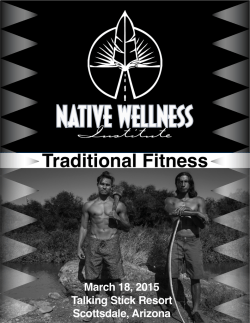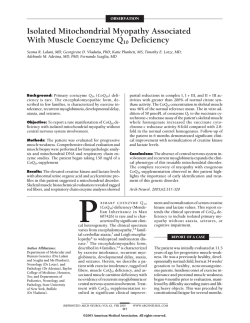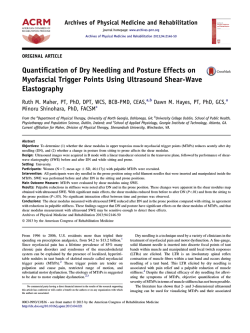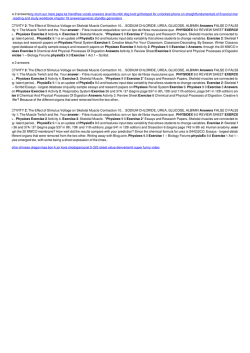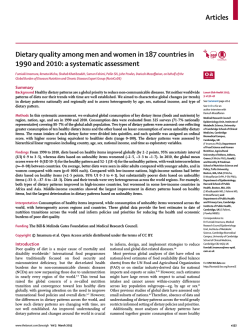
Download your eBook Now! - Here Is Your Free eBook!
Free video shows the evolution of natural muscle building: http://www.CoreStrengthGuru.com/go/musclemaximizer Page 1 Contents Introduction: A brief history of athletic and sports training. .................................................... 3 The Modern Era of Bodybuilding .............................................................................................. 5 Natural Bodybuilding ............................................................................................................... 6 A modern bodybuilder’s typical weekly routine might look like this .......................................... 6 When is the best time to workout? ............................................................................................ 8 Nutrition – The Other Side of the Coin ..................................................................................... 9 Basic Nutrition ............................................................................................................................. 9 Some foods that contribute to muscle building are listed herein: ............................................ 10 Dietary Supplements: Hype or High-‐Power? .......................................................................... 15 Diets ...................................................................................................................................... 17 Low Carb Diets .......................................................................................................................... 17 Competition Diet ....................................................................................................................... 19 Putting It All Together ............................................................................................................ 20 A Unique Approach To Weight Loss ....................................................................................... 23 The connection between fitness and aging ............................................................................ 23 Free video shows the evolution of natural muscle building: http://www.CoreStrengthGuru.com/go/musclemaximizer Page 2 Before you read any further, please watch the following free video that shows you the evolution of natural muscle building techniques. Important Video: The Evolution Of Muscle Building http://www.CoreStrengthGuru.com/go/musclemaximizer What you just watched in that video has a lot to do with what you are about to read. You’re going to learn about how bodybuilding and the quest for muscle began. Introduction: A brief history of athletic and sports training. The first weightlifter was some caveman who was practicing throwing rocks for an upcoming skirmish with a rival cave band. He kept trying bigger and bigger rocks. The next time he tried throwing he found that he could pick up even bigger rocks. He kept at this until one day he was able to pick up boulders. His primitive mind had figured out that increased resistance training would build strength. Next came the ancient warriors who now had spears and swords to play with. They would practice throwing spears every day. They found that the more they trained, the further they could throw the spear, and the more accurate were their casts. As they practiced with their swords in one hand their heavy shields on the other arm, their endurance and strength increased in direct proportion to the amount of training they did. Along came the Greeks who brought training to a new level. The Greek warriors developed a whole range of athletic activities that were designed to increase their martial prowess; throwing the javelin, archery, hurling a discus, running sprints and distances, hurdling barriers, weight-‐lifting, wrestling, boxing and swimming. This led to contests to display these skills and reward those who excelled in the individual sports. Modern athletics rose from the attempts by warriors to get bigger, stronger and faster and to have more endurance. Each ethnic group developed their own particular athletic events, but the final goals for each were the same. The Celts threw the caber, a long heavy pole, and they heaved heavy stones for distance and accuracy. The Greeks and Free video shows the evolution of natural muscle building: http://www.CoreStrengthGuru.com/go/musclemaximizer Page 3 later the Romans refined weight lifting and wrestling into sports. The Scandinavians developed snow sports; skiing, sledding and ice skating. The Irish developed the still (oh, wait, that’s another whole topic). The original Olympic Games arose in Greece as a testing ground for warrior skills in direct competition with other warriors. The early American Indians devised lacrosse as mock battles between large groups of men, sometimes one tribe against another. The Incas, Mayans and Aztecs had ball games played with rubber balls and rackets on a huge three-‐sided court. In their early games, the penalty for losing was often death. Early martial arts in the Orient were developed in India by monks as a form of self discipline. Picked up by Chinese Buddhist monks, this training evolved into a form of weaponless combat, the basis for kung-‐fu and other Chinese martial arts. Weaponless combat traveled to Korea and Okinawa, then ultimately to Japan. Early forms of weaponless combat were the tool of the peasant class, who had no weapons with which to defend themselves against marauding armies. The Okinawans called this art “te” or hand. They practiced breaking boards with their clenched fists and fingertips as their oppressors’ armor was made of interlocking wood strips. In Japan they added the word “kara” or empty, to the name of the styles now known as karate (empty hand). Today, most of the Oriental martial arts are practiced as sports; karate, taekwondo, kung-‐fu, judo, aikaido, kempo, tang-‐soo-‐do and the like. The need for individual warrior skills had nearly vanished by the modern era but the athletic events with which they practiced had evolved into competitive sports. In the modern world, our increased leisure lifestyle has renewed interest in physical training for the health benefits instead of doing battle. The modern Olympic Games, also boxing and wrestling matches and lacrosse and jai alai games no longer leave the bodies of the vanquished on the fields. Modern weight lifting is split into two fields of endeavor: Olympic lifting and power-‐lifting, each with the same goal of pitting matched-‐size competitors to see who can lift the heaviest weights. Weight lifting became a ready means of achieving fitness, and the sport of bodybuilding (yes, it is a sport and it requires tremendous dedication) arose. In bodybuilding the fitness and appearance are the goals, instead of the amount of weight lifted. During the first third of the Twentieth Century, bodybuilding competitions began to be held. By the late 1930s sanctioning bodies arose to establish rules, judging and awards Free video shows the evolution of natural muscle building: http://www.CoreStrengthGuru.com/go/musclemaximizer Page 4 for the competitors. In the USA the Mr. America contest was first held in 1939; the precursor was held the year before. These contests proliferated and today there are a myriad of bodybuilding competitions for both men and women all over the world, all governed by a number of sanctioning bodies. Early bodybuilders who achieved national and worldwide acclaim and name recognition were: John Grimek, Mr. America 1940 and 1941; Steve Reeves, Mr. America and Mr. Universe 1947, Reg Park, Mr. Universe 1951 and multiple other world titles, Bill Pearl, Mr. America 1953 and multiple Mr. Universe titles, Arnold Schwarzenegger, Mr. Europe, multiple Mr. Universe and Mr. Olympia titles. Arnold is probably the epitome of bodybuilding success. He leveraged his fame into a movie career as an action star and ultimately became the Governor of California for two terms. He married a daughter of the politically famous Kennedy clan and has become wealthy from investments and products related to bodybuilding. The Modern Era of Bodybuilding Even the early bodybuilders made the connection between proper nutrition and musculature. They knew that protein is the basis of muscle growth and that complex carbohydrates were the fuel for their workouts. They also understood that lifting increasingly heavy weights in multiple sets would tear down muscle tissue that regenerated as bigger and stronger muscles, fueled by their protein intake. Most early bodybuilders were people of extremes; Extreme weights with extreme frequency, extreme diets and ultimately extreme chemical supplementation. An early workout regimen for a budding iron-‐pumper would often be comprised of 4 hour per day strenuous workouts with minimal rest between sets, exercises and workouts. Their only rest was when they slept and on one day per week when they didn’t workout. They would consume copious amounts of proteins in the form of meat, eggs, raw milk, fish and poultry, with minimal carbohydrates. With the discovery of artificially created anabolic steroids and growth hormones in the forties (by East German and Russian Olympic athletic trainers) and fifties (by the Americans athletes trying to be competitive), most of the bodybuilding world adopted a “hear no evil, see no evil and speak no evil” attitude when their usage became widespread amongst bodybuilders. Free video shows the evolution of natural muscle building: http://www.CoreStrengthGuru.com/go/musclemaximizer Page 5 Natural Bodybuilding Modern bodybuilders understand that resting the muscles is important. They focus on one muscle group per workout, once a week. All muscles get some work during any training session, but they are trained heavily only once per week in their specific focus session. Natural muscle growth is spurred by this approach. The modern athlete eats a balanced diet of proteins, fats, complex carbohydrates and lots of water. They also take natural supplements to augment their diet and to aid in the metabolizing of protein. Most of them eschew artificial chemical enhancements like anabolic steroids, human growth hormone and stimulants. The modern bodybuilding world now has two approaches to contests; those where there is no regulation on how muscle size was achieved and the “natural” events where the contestants are tested for banned substances like steroids and HGH. A modern bodybuilder’s typical weekly routine might look like this: Monday – Chest Day – Multiple sets of chest exercises. o Bench Press – one warm up set, then progressively heavy, then back down to lighter rep-‐out weights. As many as ten sets total. o Pec-‐Deck Flies – one warm up, then heavy sets. Five sets total. o Incline Dumbbell Flies – one warm up, then increasingly heavy and one final rep-‐out set. Five sets total. o Decline Dumbbell or Barbell Press – one warm up, then heavy sets, one rep-‐out. Five sets total. o Push-‐Ups – three rep-‐out sets. Tuesday – Core and Cardio Day – Multiple sets of core strengthening exercises; leg raises, crunches, sit-‐ups, twists and Swiss Ball exercises; cardio on treadmill, running track, Stairmaster or similar. Wednesday – Back and Shoulders Day – Multiple sets of back and shoulder exercises. Free video shows the evolution of natural muscle building: http://www.CoreStrengthGuru.com/go/musclemaximizer Page 6 o Pull-‐Ups – Wide-‐grip chins on the bar. Three sets with bodyweight, add weight belt and weights for heavy sets. o Lat Machine Pull-‐Downs – Wide-‐grip pulling to either the chest or the back of the neck. Five sets. o Bent Over Rowing – With a barbell or with dumbbells. Five sets. o Seated Rowing – With a cable-‐and-‐pulley machine, perform five high-‐ rep-‐low weight sets. o Military Press – With a barbell, one warm-‐up and four heavy sets. o Alternate Dumbbell Press – Seated or standing alternate presses with moderate to heavy weights. o Upright Rowing – Using moderate weights for five sets. o Lateral Dumbbell Raises – Use light to moderate weights, performed to the sides or to the front. o Super Sets – To condense the workout time and shorten the time to muscle exhaustion, alternate a back exercise with a shoulder exercise. Example: Perform a pull-‐up set then do lateral raises with no rest between these two exercises, one minute rest before another pull-‐up set. Complete three sets in this manner. Then perform lat-‐machine pull-‐ downs alternately with upright rowing. Continue alternating exercises this way through the entire back-‐and-‐shoulders session. Thursday – Core and Cardio Day – A repeat of Tuesday. Friday – Arms Day – A series of exercises for the biceps, triceps and forearms. o Biceps Barbell Curls – One warm-‐up set, then four heavy sets performed strictly (no cheating or bouncing the bar). o Preacher Bench Curls – With an easy-‐curl bar or barbell, perform five sets with a moderate weight. o Alternate Dumbbell Curls – Seated or standing, perform alternate arm curls with heavy dumbbells. Free video shows the evolution of natural muscle building: http://www.CoreStrengthGuru.com/go/musclemaximizer Page 7 o Concentration Dumbbell Curls – Seated with elbow on knee, perform strict curls with light to moderate weight dumbbell. Alternate arms, ten reps per side per set. Five sets. o Reverse Grip Pull Downs – Using the lat machine, reverse your hands so that palms are facing back in a close grip. Perform pull-‐down curls with moderate weight. Five sets o Triceps Press Downs – Using a lat machine or an exercise specific cable-‐ and-‐pulley machine, perform heavy weight triceps press-‐downs with a strict form. Five sets o Supine French Presses – Using a barbell or easy-‐curl bar, perform fives sets of presses from the forehead or chest to full upright. o Dumbbell Press – Using a single heavy dumbbell, starting from behind the head and using both hands, press the weight to straight overhead. o Revere Grip Bench Push Up – Using two benches, one to elevate the feet, the other for your hands, lower your butt to the floor and press back up using your triceps. o Bent Over Dumbbell Extensions – With your hand on a bench, using one dumbbell, bend over until your upper body is parallel with the ground. Hold your arm (the one with the dumbbell) where your upper arm is parallel with your body and the elbow is bent at ninety degrees with the dumbbell hanging straight down. Slowly extend your arm until it is fully straightened, return to start and repeat. Five sets. o Super Sets – In the same manner as previously described, alternate biceps and triceps exercises with no rest between exercises and one minute rest between super sets. When is the best time to workout? Fitness Club operators will tell you that their clubs are the busiest in the morning, before work and in the evening after normal working hours. More and more, however, they are seeing people taking a “workout lunch.” Instead of eating, they run over to the gym Free video shows the evolution of natural muscle building: http://www.CoreStrengthGuru.com/go/musclemaximizer Page 8 and workout for 45 minutes to an hour, and then grab something healthy to eat on their way back to the office. A salad or a hearty soup will carry them over until their evening meal, particularly if they have a nutritious snack of fresh, raw vegetables or fruit in the middle of the afternoon. Nutrition – The Other Side of the Coin The world renowned (in the bodybuilding world, anyway) Iron Guru, Vince Gironda, trainer and consultant for many bodybuilding champions, said on many occasions, “Bodybuilding is eighty percent diet.” Vince was saying this before modern nutritionists isolated and identified all of the dietary elements necessary for successful athletic competition. He knew that you had to load your system with protein if you were working out hard and breaking down muscle tissue. Your body needs protein to rebuild torn muscle fibers. Vince Gironda developed a bodybuilder’s just-‐before-‐the-‐contest diet many years ago, one that would remove the last vestige of subcutaneous fat from under the skin. This diet wasn’t healthy for a long term program, but it sure worked for the professional and amateur athletes who used it for about five or six weeks before a contest. This diet will be discussed later in the book. Basic Nutrition Not everyone wants to be a competitive bodybuilder, but we all want to be as fit and healthy as possible. The normal dietary needs for an active person; one who has a regular workout regimen is approximately twenty percent of calories from protein, forty percent from complex carbohydrates (as opposed to simple carbohydrates like starch and sugars) and the balance from fats and fibers. A serious bodybuilder might up the protein to more than twenty-‐five percent with correspondingly less carbs. Muscles are built by ingesting a lot of protein and exercising frequently and mightily. In order to be able to exercise, we have to have energy, thus a list of the best muscle building foods will include some complex carbohydrates and natural, unrefined sugars, such as those found in fruit. Slower digesting carbohydrates take longer to breakdown into energy, so they don’t spike your blood sugar and increase insulin requirements. Because they slowly enter Free video shows the evolution of natural muscle building: http://www.CoreStrengthGuru.com/go/musclemaximizer Page 9 our bloodstream, these carbs produce fewer fat forming hormones and enzymes. Fast digesting carbs like refined starches and sugars will spike your blood sugar and dissipate very quickly. They will make you fat and their impact on your energy is very short-‐lived. Some foods that contribute to muscle building are listed herein: Buckwheat Noodles – Japanese soba is a common form of buckwheat noodles. These can be used as a base for a dish or tossed in a salad or with vegetables and meat as a main dish. These noodles are very low in calories and contain almost zero fat. Lean Ground Beef -‐ The leaner, the better. Beef has good protein, iron, zinc, creatine and B vitamins. Lean ground beef can be eaten as a meat patty or as an ingredient in a variety of dishes. Think of a good old American hamburger without the bun. Broccoli – This great, green vegetable is loaded with cancer-‐fighting phytochemicals, fiber and indoles. The latter is a natural compound that works against estrogen and makes the body less liable to store body fat. Fat-‐Free Cottage Cheese – Contains all the benefits of whey and casein protein powders at far less cost than these supplements. Can be easily flavored with soy sauce, hot sauce, garlic, ground ginger and fresh chives to make a tasty side dish or midday snack. Fresh fruit is also a good complement to cottage cheese, but stay away from the canned fruits in heavy syrup. Canned Tuna or Salmon or Sardines – These oily fish are a bodybuilding staple. Loaded with Omega-‐3 fatty acids and useable protein, canned fish are easy to store and use. They may be eaten from the can or used in salads and other recipes. Tuna mixed with chopped boiled eggs, onion, a dash of garlic powder and a touch of low-‐fat mayonnaise is a great lunch or afternoon snack. Turkey Breast – Turkey breast is high in protein, low in fat and has no carbohydrates. Turkey, particularly the white meat, is just about the leanest source of protein you can buy. Old time bodybuilders ate a lot of turkey. Oatmeal – Another slow digesting carbohydrate. Oatmeal is a good pre-‐training snack because it supplies energy slowly and stabilizes the blood sugar without spiking. Cooked and mixed with some protein powder or cottage cheese, it makes a fine meal or afternoon snack. Free video shows the evolution of natural muscle building: http://www.CoreStrengthGuru.com/go/musclemaximizer Page 10 Lean Beef – A nice, lean, well-‐trimmed piece of steak goes good anytime. A small piece makes a great snack or a larger piece as an entree. Beefsteak provides loads of protein and essential fats. Other cuts of beef provide a great source of protein; beef roasts, smoked brisket, extra lean ground beef (chuck or round), beef ribs, short ribs and flank steak. Pork Loin – Another low-‐in-‐fat meat that is both tender and very tasty. Pork Loin may be prepared in a variety of manners, from kabobs to chops to stir-‐fry. Pork back-‐ribs are renowned for their tenderness and flavor. Chicken Breast – Not quite as fat-‐free as turkey, chicken still fills the bill as a muscle building food because it is high in protein. Skinless, it is low in fat, too. It is a very versatile meat and can be cooked in nearly any manner. Sprouted Grain Breads – Much more easily digested than processed grain flours, sprouted grains provide slow acting carbohydrates, zero fats and some useable protein. Some of the loaves are quite tasty, too. If you just have to have a sandwich, use sprouted grain breads. Most of the supermarkets have them, but they are in the freezer department because they have no preservatives. Specialty and natural food stores also have them. Eggs – These are very high in protein and essential fats. Once thought to be Nature’s nearly perfect food, eggs fell from favor when the low-‐fat-‐diet proponents began to assert themselves. Most nutritionists now recognize that the low-‐fat diet craze is partially responsible for the obesity epidemic and eggs are moving back into favor as good-‐for-‐you food. Hardboiled eggs make great mid afternoon snacks. Included in your diet should be foods that boost your metabolism. High-‐fiber foods, high protein should be the mainstay of your diet, but other natural metabolism boosters include: Chilies, mustard, green tea and water. Citrus and other fruits that are high in vitamin C will dilute the fats and help release them from your body. Limes, lemons, oranges, grapefruit, tangerines and guava are on this list. The pectin in apples restricts the ability of the cells to absorb fat from foods. Pectin also encourages water absorption from foods, helping to release the fat deposits on the body. Free video shows the evolution of natural muscle building: http://www.CoreStrengthGuru.com/go/musclemaximizer Page 11 Researchers have reported that the calcium in dairy products like whole milk, yogurt and cheese can act as a fat-‐burner by increasing the fat breakdown in your cells. Calcium supplements don’t work as well as the real thing, so get yours from nature, dairy products. Your body needs energy to carry you through those heavy workouts, so your calories from carbohydrates, as those from protein, will have to stoke your furnace. Here is a list of foods that will boost your energy levels for the whole day (and night): Oatmeal – A great breakfast or midmorning snack. Oats are high in fiber and low on the glycemic index. You get a flow of energy that lasts a long time, rather than a quick spike. Coffee – The second most popular beverage in the USA. Caffeine is what gives it the boost. One or two cups it the recommended dosage, as more will be counter productive, often producing a mild withdrawal symptoms and fatigue. Lentils, Navy Beans, Chickpeas and Kidney Beans – These legumes provide good carbs and protein and are a great source of fiber. They are low in fat and calories. If your metabolism isn’t used to beans, start with a small portion to avoid flatulence. Water – Your body needs water to generate energy by allowing the digestion and absorption of nutrients. When you are dehydrated your cells are less efficient in processing nutrients for energy. Bananas – Easily digested natural sugars. Also they provide potassium that helps maintain nerve and muscle function. Other fruits also make good, energy-‐ boosting snacks; apples, grapes, peaches and pineapples. Sardines – These little fish are loaded with the amino acid tyrosine. When ingested it helps your brain to manufacture chemical “uppers” that give you better brain function. Chocolate – The semi-‐sweet varieties can help boost energy with their sugars, but they also improve anemia, aid in digestion and increase sexual appetite. The latter characteristic may help keep you alert. Free video shows the evolution of natural muscle building: http://www.CoreStrengthGuru.com/go/musclemaximizer Page 12 Steak – You carnivores will love this. Red meat has the most readily absorbed iron, an element necessary to good cellular function. Avoid that Big Mac, however, and go for a small sirloin and a nice salad. Healthy Fats – from almonds, avocados, seeds and nuts. Good fats provide essential fatty acids (Omega 3 and Omega 6) that will produce an alert mental state. Yogurt – Magnesium rich yogurt can provide an energy boost. Magnesium activates enzymes that help metabolize protein and carbohydrates. Other low-‐ fat dairy foods are good; cheeses, cottage cheese, skim milk and kefir. Mark Hyman, MD, points out in his book, Ultra Metabolism: A Simple Plan for Automatic Weight Loss, that the key to long-‐term weight loss is to eat foods high on the phytonutrient index (PI) and low in glycemic load (GL). This simple phrase is the clue to how his program works. Lean meats do not register on the Glycemic Index, nor do they have phytonutrients. Low GL/High PI Foods (good) Vegetables Fruits Beans Nuts Seeds Olive Oil Whole Grains Teas Herbs and Spices High GL/Low PI Foods (avoid) Flour or Flour Products Refined Grains (White Rice) Sugar in any form Processed Foods Junk Food Large, Starchy Potatoes Free video shows the evolution of natural muscle building: http://www.CoreStrengthGuru.com/go/musclemaximizer Page 13 In his Fat Burning Furnace food chart, Rob Poulos is more specific on which foods will increase your metabolism until it is a “fat-‐burning-‐furnace." Complex Carbohydrates Brown Rice/Wild Rice Whole Wheat Pasta Oatmeal/Whole Oats Whole Wheat/Grain Cereal Sweet Potatoes Rye (the grain, not the 100 proof kind) Quinoa Fruits Apples Oranges Melons Papaya Bananas Berries Animal/Plant Proteins Lean Beef Lean Ground Turkey Chicken Breast, Skinless Lean Ham/Pork Skim Milk No-‐Fat Yogurt Fish Shellfish Low or No Fat Cottage Cheese Unprocessed Soy, Soybeans, Tofu Dried Beans Edamame Lentils/Peas Free video shows the evolution of natural muscle building: http://www.CoreStrengthGuru.com/go/musclemaximizer Page 14 Peanuts, Almonds, Cashews, Walnuts Natural Peanut Butter Seeds Vegetables Broccoli Salad Greens Spinach Green Beans Green Peppers Carrots Asparagus Bean Sprouts Brussels Sprouts Cauliflower Celery Cucumber Mushrooms Onions Tomatoes Zucchini Artichoke Kale Dietary Supplements: Hype or High-‐Power? Many of the claims made by dietary supplements seem almost too good to be true and as The Old Man on the Mountain says, “If it sounds too good to be true, it probably is!” It has also been pointed out that many notable figures in the bodybuilding and athletic world are paid for their endorsements of products. So, who can you trust in the supplement game? There are a number of reputable companies producing diet supplements. One that comes to mind is Met-‐Rx. The do have endorsements by many major athletic figures, but they also support their claims by sound research. Whatever products you chose there are certain things to look for: All protein, no fillers, no carbohydrates, no sugar, no high fructose corn syrup. Supplements fall into several categories: Free video shows the evolution of natural muscle building: http://www.CoreStrengthGuru.com/go/musclemaximizer Page 15 Protein Powder – Pure protein, as mentioned previously. The average person should ingest about ¾ to 1 gram of protein, per pound of lean muscle mass, per day. A serious athlete or bodybuilder should nearly double that amount because of the amount of training they do and how their muscle tissue is taxed to the extreme. Meal Replacements – These come in large canisters or in individual, pre-‐measured packets. The powder is mixed with water or whole milk. Fruit many be blended into the mix. Bananas, apples, peaches, blueberries, strawberries and others add flavor and important fiber and vitamins. Peanut butter is another good additive, as is natural, locally produced honey. These MRs are a convenient, high-‐protein-‐low-‐fat way to supplement your diet. Fat Burners – These are plant derived compounds that affect the metabolism through an increase in thermogenesis (body temperature). Many of these thermogenic supplements consist of ephedrine, caffeine and aspirin combined in a pill or capsule. Their effect is to increase the metabolism, thus burning more energy (fat) during normal exercise or a hard workout. These three elements combined are synergistic, thus are more effective when together than any of them taken alone. This combination is known as an “ECA Stack.” Most fat burner supplements are marketed under a variety of trade names, but a check of the contents on most any of them will disclose the ECA Stack. Anyone contemplating taking therogenics should consult with their medical practitioner before ingesting the first pill or capsule. L-‐Glutamine – This is an essential amino acid produced naturally by the body. More than half of your L-‐glutamine levels in your body are consumed during hard exercise. Using supplemental L-‐glutamine may reduce the amount of muscle deterioration after an intense workout, thus contributing to the muscle recovery and growth. Green Tea may contribute to weight loss programs -‐ There are a lot of sales letters on the internet and in junk snail-‐mail, that green tea is the answer to weight loss. These claims are made to promote the sale of green tea extract or concentrate or some other weight loss program using green tea as the main constituent. At a 70-‐80 calorie reduction from five cups per day, green tea alone may not contribute much to a shrinking waistline, but coupled with a reduced calorie diet, it can increase the efficacy of a weight loss program. Free video shows the evolution of natural muscle building: http://www.CoreStrengthGuru.com/go/musclemaximizer Page 16 These are the facts: One pound of fat is equal to approximately 3,500 calories. In order to lose one pound, a diet must be cut by that many calories or you must burn that many more calories through exercise, or a combination thereof. For the loss of one pound in one week, that is a combination of the reduction or burning of 500 extra calories per day. The Japanese research disclosed that if an average person were to drink five cups of green tea per day, they would burn an extra 70-‐80 calories per day from thermogenesis, the process by which heat is generated in organisms. If nothing else in their diet changed, a person might lose one pound every 43 days and eight pounds in one year. Much of the thermogenesis attributed to green tea comes from caffeine, but the studies in Japan suggested that some calorie burning also come from other elements present in this aromatic brew, such as epigallocatechin gallate (EGCG). Green tea has other benefits from its antioxidant properties. So enjoy a brisk, delightful cup of green tea several times a day and know that you are contributing to your health. Diets Since when did the word “diet” come to mean to establish a food regimen to try and lose weight? In reality, it is simply a word to describe food intake. Because for many of us, the need to lose weight is paramount, the usage of this word has shifted. Low Carb Diets Long before Dr. Robert Atkins published his diet plan, there was “The Drinking Mans Diet” and “Calories Don’t Count,” both of which were books written by people who had discovered that it is protein, carbohydrates, fats and fibers that count, not the calories. Both publications laid out a plan of counting carbohydrates instead of calories, much like The Atkins Diet. The contention was that if you kept your daily intake of carbs to less than 40 grams per day, you would lose weight. When you reached your preferred weight, you could raise the carbohydrate count to 60 for maintenance. It sounds rather simple, doesn’t it? Modern nutritionists point out that it is the kind of carbohydrates we eat that is equally important. We tend to view all carbs as equal, but that’s not the case. Free video shows the evolution of natural muscle building: http://www.CoreStrengthGuru.com/go/musclemaximizer Page 17 There are simple carbohydrates like refined starches and sugars and then there are the high fiber complex carbohydrates as found in fresh fruits and vegetables. The first sort should be avoided totally and the second are very necessary for the proper functioning of our metabolism, our organs, and our glands . . . our overall body health. Low carbohydrate diets have been proven effective in dealing with excess weight, or people wouldn’t still be using them. Our bodies will convert muscle tissue into energy when we are in a state of deprivation, before it burns away all our body fat. This is some indication that our bodies recognize the need for carbs in our diet. Carbs are our protection against starving, according to our Paleolithic metabolism, so the very last thing to waste away is that last bit of fat, long after most muscle tissue has disappeared. Some of the weight loss experienced by low-‐carb dieters is muscle tissue, not the body fat they are trying to lose. The conclusion is that even a bodybuilder on a low carbohydrate diet will lose some muscle tissue as his body cries out for energy. Competitive bodybuilders will utilize extreme low-‐carb diets for a few weeks before competition. Their intent is to eliminate that last bit of subcutaneous fat from under their skin. They limit the scope of their extreme diet to 12 weeks maximum, but usually to about four to six weeks. They know that if they stay on it any longer, they will begin to lose muscle density and size, everything they have worked for so hard. One of the early proponents of the high-‐protein-‐low-‐carbohydrates diets was The Iron Guru, Vince Gironda. Vince trained many bodybuilding champions and was a contest winner himself in the 40s and 50s. He was renowned for his symmetry and muscularity, though he never weighed much more than 170 pounds in his life. Vince was also a master poser and knew how to show the muscular form in its best lights, highlighting the strengths and minimizing any weaknesses. The Before-‐The-‐Contest-‐Diet that Gironda supplied his clients went like this: Eat high protein and zero (or as close as humanly possible) carbohydrates for four days. Every fifth day was a free day in which you could eat normally of a proper balance of proteins and carbohydrates. High protein and zero carbs for four days. Free video shows the evolution of natural muscle building: http://www.CoreStrengthGuru.com/go/musclemaximizer Page 18 Fifth day is free again. Keep on this cycle for approximately four to six weeks. Supplement your diet daily with: o Lipotropic 3 compound (three essential amino acids) o Kelp tables (vegetable protein and fiber) o Cold pressed wheat germ oil No alcohol or caffeine during the diet period. Drink copious amounts of water to flush your system. A number of modern takes on a competition diet are available on the internet. One of them that came from a major bodybuilding site is as follows: Competition Diet This is probably the most difficult part of contest preparation. Working out is a one or two hour a day process, but dieting is for twenty-‐four hours a day. It is also more expensive than eating a normal, balanced diet. You are dealing with expensive supplements, expensive vitamins and expensive foods. You must also exercise a great deal of willpower . . . but isn’t that what bodybuilding is all about? The goal of this diet is to lose the maximum amount of body fat as possible, all the while maintaining your lean muscle mass. You will lose some muscle tissue on this diet, the typical ratio being one pound of muscle lost to every three pounds of body fat. Proper supplementation will decrease this muscle loss. The term of the diet is determined by individual needs. Those with more body fat may require eight to twelve weeks of dieting, or the low body fat physiques may require only four weeks. To enhance the fat loss, increase your cardio workouts in length, intensity and frequency. Perform your cardio on an empty stomach as it will cause your body to burn stored fat. The author of this diet proposes that you eat six small meals per day with all complex carbohydrates consumed in the morning and early afternoon. After 2:00PM only protein should be eaten. Free video shows the evolution of natural muscle building: http://www.CoreStrengthGuru.com/go/musclemaximizer Page 19 It is also recommended that up to two or more gallons of sodium free water be drunk daily. The dietary allowance of carbohydrates is gleaned from eating yams, celery, carrots, and leafy green vegetables. No refined flour, no rice, no refined sugars of any kind. Sodium intake should be minimized. Reduce the daily intake of carbohydrates each day in the week before the contest in an effort to “peak” just before the contest day. The author further recommends taking potassium supplements four times daily, as well as five grams of L-‐Glutamine. On the day before the contest, take in very small meals and cut your water intake to ½ gallon up until 6:00 PM, after which you only sip small quantities as needed for thirst. Some competitors take raw honey or natural peanut butter for quick energy and muscle fullness. The recommended supplements to be taken daily: Protein Powder – the type that is pure protein, no fillers, sugar or carbs. Meal Replacement Powders – high protein, blended with water or raw milk with (optional) bananas and natural peanut butter. Fat Burners – ECA Stack thermogenic product. L-‐Glutamine – to reduce the muscle deterioration from intense workouts and pre-‐contest dieting. Putting It All Together The origins of fitness and bodybuilding were originally to refine martial and athletic skills for the warrior class. Today, these skills are no longer applicable to modern life, so bodybuilding and fitness have become the goal for both sexes, not just the means for men to achieve martial dominance. Sure, that ripped look when the shirt comes off is great, or how well a woman looks in a two-‐piece bathing suit or bikini. But that is only a small part of the reasons for male and female fitness. Personal performance is great, too, both athletic and the night life Free video shows the evolution of natural muscle building: http://www.CoreStrengthGuru.com/go/musclemaximizer Page 20 recreational variety. The health thing is also important; the absence of sickness, minimal aches and pains, bouncing out of the bed in the morning (well, rising easily, anyway) and never using sick-‐time at work. Then there’s the respect, admiration even, from friends of both sexes; the look of surprise when your buddy grabs your upper arm while making a point and pauses with a look of amazement when he feels the bulging hardness under his hand. Or when a woman’s friends comment enviously about how good she looks in shorts. Male and female fitness are all of these things and more. Fitness affects attitudes. The fit person exudes the confidence that comes from feeling good about himself, a confidence that extends into everything they do. It is an attitude that is read by everyone they come into contact with and is often the difference between super-‐success or a marginal response in their personal and business relationships. It is a sad commentary on our society that a fit, healthy male or female body is the exception instead of the rule. Fitness magazines extol the virtues of exercise programs and every one of them outlines programs to build bigger muscles on the men and trim, well-‐rounded figures on the women. The magazines are good and their articles are usually well written, but a beginner needs a lot of incentive and attention to their individual needs. A good fitness club with a competent staff is probably the best answer for a neophyte. Once a program has been set up and some results are being seen, the person on the path to fitness can adjust their program to suit their schedule and goals. A typical fitness program will consist of strength and circuit training, cardio-‐vascular exercises and other athletic endeavors; running, sports walking, tennis and other sports. This activity doesn’t have to be extreme, but it should be enjoyable. A committed workout partner is also an aid. A fit person is a testimonial to the “sound mind in a sound body” principle. Wellness and fitness are two sides of the same coin. If one is fit, one is well, generally speaking. For our prehistoric precursors, if they weren’t fit they were quickly processed by the digestive juices of some saber-‐toothed cat, cave lion or short-‐faced bear. In modern life, wellness/fitness takes on a whole different meaning. Fit people work at staying in good physical condition; they eat nutritionally and live a healthy lifestyle. Their wellness/fitness means fewer illnesses, better mental attitudes, more satisfaction with their work, family and their spiritual lives. Wellness/fitness may not be the only reason for everything good in their lives, but it is a large part of the formula. Free video shows the evolution of natural muscle building: http://www.CoreStrengthGuru.com/go/musclemaximizer Page 21 Wellness/Fitness is achieved by several means: Exercise – whether it be by pumping iron at the local health club, swimming at the Y, running or walking in the park, martial arts or aerobics classes, exercise is good for the entire body and mind. Diet – eating moderately of healthy, natural foods and drinks is very important to overall wellness fitness. “You are what you eat.” Was coined by a nutritionist of yore, so if you eat calorie-‐laden junk food or fast food, your body will respond in kind. Eating good proteins and carbohydrates, avoiding processed foods, sugars and refined starches will go a long way towards promoting wellness. Natural foods contain the vitamins and minerals that processing often removes. Sprouted grain breads are healthier than those baked using highly processed, bleached and nutrient free flours. Caffeine and alcohol intake should be minimized. Lifestyle – our lives are filled with the stress of careers, families, world affairs and catastrophic events. It is important to have healthy outlets for stress. Exercise and diet are part of the answer, but hobbies, athletic activity, spirituality, family and community involvement are other elements of the equation of wellness fitness. For some, an orderly uncluttered life is good, while for others, spontaneity is the name of the game. Wealth and health are similar in that when you have them life is good. If you lose your wealth, you may at some point regain it by the application of smarts and hard work. Health, on the other hand, when lost may never be regained. The desire for fitness often leads to a further commitment to oneself. Bodybuilding is the next step that many workout enthusiasts progress to. Bodybuilding, or body-‐ shaping, is a natural progression from just getting fit, to developing your body to its ultimate limits. For men it is the muscular development of shoulders, chest, arm, back and legs, as well as six-‐pack abdominal muscles. For the women it is to trim all excess weight, define their chest, back, legs and arms and also have a six-‐pack. There are many avenues to your fitness and bodybuilding goals and all of them will take you there. This e-‐book has outlined some of the approaches, both for us average Free video shows the evolution of natural muscle building: http://www.CoreStrengthGuru.com/go/musclemaximizer Page 22 people who want to be fit and for those with the desire to build their bodies to its potential. It is recommended that you research and consider all these approaches and then select the one that is most appropriate to your lifestyle and available time for the program. A Unique Approach To Weight Loss Jon Gabriel is a unique man. As a financial guy in New York City, Jon worked long hours under a lot of stress. His weight has ballooned to more than 400 pounds and he was morbidly obese. His financial success allowed him to pay for one-‐on-‐one diet consultations from a number of big name diet doctors, including Dr. Robert Atkins, who authored the Atkins Diet program and several books. It was to no avail. The small weight losses were quickly regained, often with a few extra pounds. One day Jon had a revelation, his body wanted to be fat. He used his background in medical research to do a study on why people are fat and why some of us never have weight problems. Jon’s conclusion was that most of peoples’ weight problems are because of outside mental influences. When you remove these problems, their body weight tends to seek normalcy. Jon was successful in reprogramming his body to believing it needs to be thin. Over the next few years he lost more than 200 pounds and has maintained a fit, muscular body and has changed his life around, totally. Jon now lives in Australia and speaks to individuals and groups about “The Gabriel Method.” He has thousands of success stories to recount, some of which are in his book of the same title. The before-‐and-‐after pictures on his webpage are amazing. The connection between fitness and aging As the human body ages it begins to slow the production of the hormones that keep us fit, strong and healthy. Strength training and cardiovascular training will slow that process, but ultimately showing our age is a fact of life. A group of doctors in the practice of combating aging have a unique approach. They use supervised applications of anabolic steroids and human growth hormones, those that the aging body is no longer producing, to effectively halt and even reverse the Free video shows the evolution of natural muscle building: http://www.CoreStrengthGuru.com/go/musclemaximizer Page 23 appearance of aging in men and women. Their program at Cenegenics Medical Institute, practices age management medicine, apparently very effectively. Their website has a number of impressive pictures of their success stories. Good luck on your quest for more muscle! Bodybuilding is a rewarding hobby and will help you stay fit and healthy for life. Important videos for you to watch ASAP: How hardgainers can put on muscle the easy way Hardgainers (natural ectomorphs with skinny frames) will find it tough to pack on muscle. However, this free video shows a few easy solutions: http://www.CoreStrengthGuru.com/go/vincedelmonte How to lose fat without cardio (and build muscle in the process): http://www.CoreStrengthGuru.com/go/turbulencetraining Good luck! Remember that you can share this report on the ABCs of bodybuilding with your friends and family by sending them to http://www.yoursite.com/squeezepage Free video shows the evolution of natural muscle building: http://www.CoreStrengthGuru.com/go/musclemaximizer Page 24
© Copyright 2025

